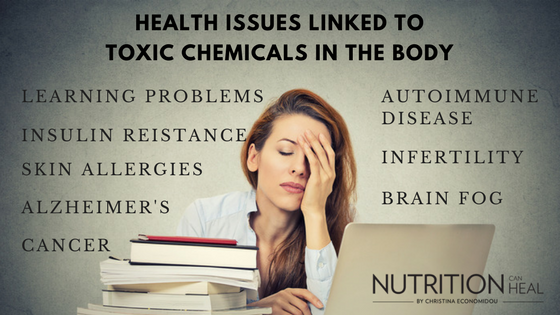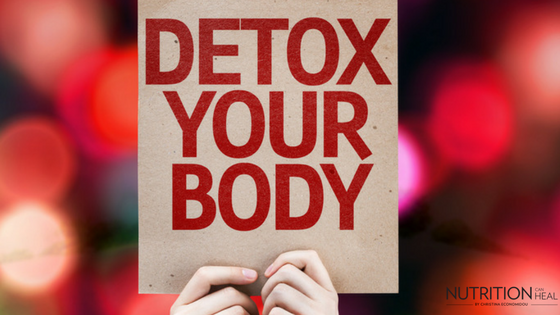
The world around us is not as clean and pure as it once was.
Our body is extremely vulnerable to damage from environmental toxins and depends on a very delicate internal balance in order to work at its best and stay healthy. So what can we do to protect ourselves from today’s pollution that is all around us and even affects our food supply?
This is a problem that is too big to be ignored. In this article I will present some of the potential problems that can arise from our exposure to environmental toxins and examine how detoxing and cleansing your body periodically can help counteract some of the damage caused.
The real problem of environmental toxins
Toxins are present in the environment at levels that are much higher than ever before. Toxic chemicals, heavy metals, excessive alcohol consumption and toxins from cigarette smoking enter the body constantly. Add to that radiation, electromagnetic frequencies and indoor and outdoor pollution that are the by-products of modern life and you get an idea of what our body has to filter on a daily basis.

Various heavy metals are commonly ingested through the food that we eat, even though the Environmental Protection Agency warns that there is no safe level for any heavy metal in the body. Toxic metals commonly stored in the body at high concentrations are arsenic, cadmium, lead and mercury.
Aluminium enters the body from vaccines, anti-perspirants, aluminium foil, antacid medications, aluminium cookware, etc.
Arsenic enters the body from rice and rice products, commercial chicken feed, pesticides and fungisides.
Mercury enters the body via pollution from batteries, air conditioner filters, broken thermometers, cosmetics, dental amalgam fillings, fish and shellfish (especially large fish such as tuna, shark and swordfish).
NIckel enters the body via braces and dental crowns, air pollution, batteries, cigarette smoke, cosmetics, fertilizers, fuel oil combustion, hydrogenated fats and oils (margarine, fast food, commercial peanut butter and shortening, imitation whipped cream), industrial waste, oysters and shellfish, stainless steel cookware (makes it shiny), and occupational exposure.
PCBs and Dioxins enter the body via contaminated fish which are farmed near areas that are highly industrialized.
BPA enters the body via plastic food containers, plastic water bottles, plastic baby bottles, canned food and plastic food utensils.
Phthalates enter the body via cosmetics especially personal care products and perfums.
Serious Health Consequences

The level of the exposure to toxins and the body’s ability to process and excrete them are key in determining longterm health. A great number of health problems are the result of toxic overload. While the human body has an innate capacity to detoxify, it often cannot cope with the elevated levels of toxins we are exposed to today.
Chemicals such as pesticides, chlorine, dioxins, PCBs, and acrylamide build up over time, notably increasing the risk of autoimmune diseases, cancer and brain health deterioration.

Toxins can slowly damage cells, tissues, organs and systems in the body, resulting in chronic health problems. They:
– interfere with normal hormonal function,
– increase free radical damage,
– impair DNA repair,
– weaken the immune system making it unable to protect the body,
– block insulin receptors leading to insulin resistance and Type II diabetes,
– lead lead to brain fog, brain damage, Parkinson’s and Alzeheimer’s,
– lead to depression and low energy,
– result in heart disease and cancer.

The Need for Detoxifying the Body
Various organs in the body are naturally designed to eliminate toxins. These are the lymphatic system, the large intestine, the liver and kidneys, the skin, and the lungs.
However, very often some of the toxin removal canals become blocked, as in the case of constipation.
When the toxins entering the body exceed its natural detoxification capacity, the liver’s detoxification system is overloaded. The continuous cleaning process can exhaust organs such as the liver and result in impaired toxin removal and in high levels of toxins accumulating in the body.

This is the reason why, over a period of time, the body’s detox organs need a helping hand!
Detoxing and cleansing your body of toxins periodically can help counteract some of the damage caused by the various toxins mentioned above.
Who is particularly at risk
Living stressful and hectic lifestyles, feeling tired and over-worked often and having various hormonal issues are all signs of toxin overload.
– Do you regularly eat ready meals and packaged foods?
– Do you have food cravings often?
– Do you often overindulge in food and drink?
– Do you have skin problems?
– Do you have constipation?
All the above are also indications that your body is in need of healing from toxic overload. It needs a helping hand in releasing these chemicals and could greatly benefit from a balanced cleanse or detox program.
What a balanced detox or cleanse program can do for you!
A cleanse or detoxification program is designed to optimize the elimination of toxins from the body and cleanse the digestive system. It can:
- teach you how to avoid toxins in food and the products you use
- re-boot and rebalance your body
- ensure optimal functioning of each toxin elimination organ
- support the body’s ability to excrete toxins
- increase your vitality
- promote overall good health
- support a healthy immune system and
- repair some of the damage done by toxin overload
- protect the body from premature ageing.
Take Home Message
- The world around us is not as clean and pure as it once was.
- The toxins entering the body often exceed its detoxification capacity, resulting in chronic health problems, fatique and disability.
- Ideally all of us should follow a 15-30 days detox program once or twice a year, or a smaller 3-day detox program every two to three months.
- Stay tuned for Nutrition Can Heal’s Detox programs that are going to be available soon from our website!
References
- Klein, A. V., and H. Kiat. “Detox diets for toxin elimination and weight management: a critical review of the evidence.” Journal of Human Nutrition and Dietetics 28, no. 6 (2015): 675-686.
- Cohen, Marc. “Environmental toxins and health: the health impact of pesticides.” Australian family physician 36, no. 12 (2007): 1002.
- Jaishankar, Monisha, Tenzin Tseten, Naresh Anbalagan, Blessy B. Mathew, and Krishnamurthy N. Beeregowda. “Toxicity, mechanism and health effects of some heavy metals.” Interdisciplinary toxicology 7, no. 2 (2014): 60-72.
- BPA bombshell – Industry database reveals 16,000 foods with toxic chemical in packaging, http://www.ewg.org/research/bpa-bombshell#.WZ1KqSgjFPY
- Mineral Power, Toxic Metals Guide, by Wendy Myers.




